← A Hard Day's Night Variations List
A Hard Day's Night
(US Format)
LP.3366.UA1.2 | United Artists Red and Silver (Compo)
Later pressings, with stereo "underslick".
LP.3366.UA1.2 represents all subsequent red label mono pressings of A Hard Day's Night in Canada. These repressings are identified by the later cover construction that shows a "trimmable" stereo slick under the white back slick, indicating they were produced AFTER stereo copies were introduced in early 1965. These later red label variations were repressed many times until possibly 1968 when Mono was phased out. There exists 4 cover construction configurations that were used almost interchangably between 1965 and 1968. LP.3366.UA1.2 can therefore be found either cardboard frame types between 1965 and 1968.
Availability
This second variation was available between early 1965 after stereo copies were introduced, and mid 1968 (for approximately 3 years) when mono was phased out. At some point, upon initial high demand, black or blue labels were used instead when they momentarily ran out of red labels due to a high spike in production (see entries LP.3366.UA1.2 and LP.3366.UA1.3), but the red labels returned once label stocks were replenished and were consistently used up until mono was phased out.

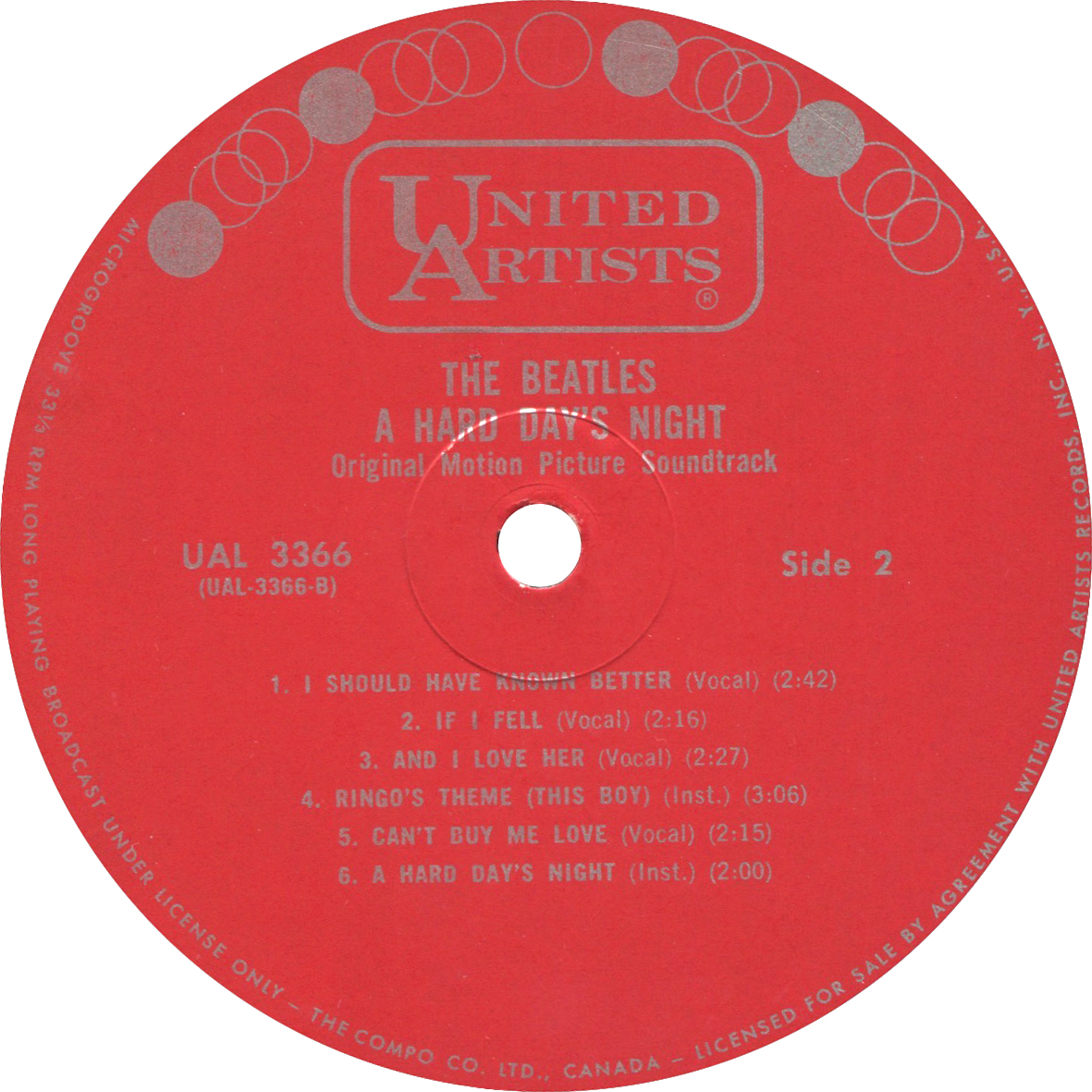
General Information
This album was a massive hit and was designed as a companion to the movie. The US format (that was also used here in Canada) differed greatly from the UK configuration, by its different cover, yes, but mostly by the fact that it exclusively focused on the movie (whereas unlike the UK album, non-movie tracks were kept for another completely separate album i.e., Something New). Being a soundtrack album, the free space left by the removed non-movie tracks was filled with a selection of four George Martin instrumentals heard in the movie.
These tracks were also released on a few George Martin releases that include two early 45s.


The four tracks were also found on his "A Hard Day’s Night, Instrumental Versions Of The Motion Picture Score" album, and "Ringo's Theme (This Boy)" was featured on "Off The Beatle Track", all released on United Artists (source: P. Hemmingsen, The Beatles’ Canadian Discography part. 2).

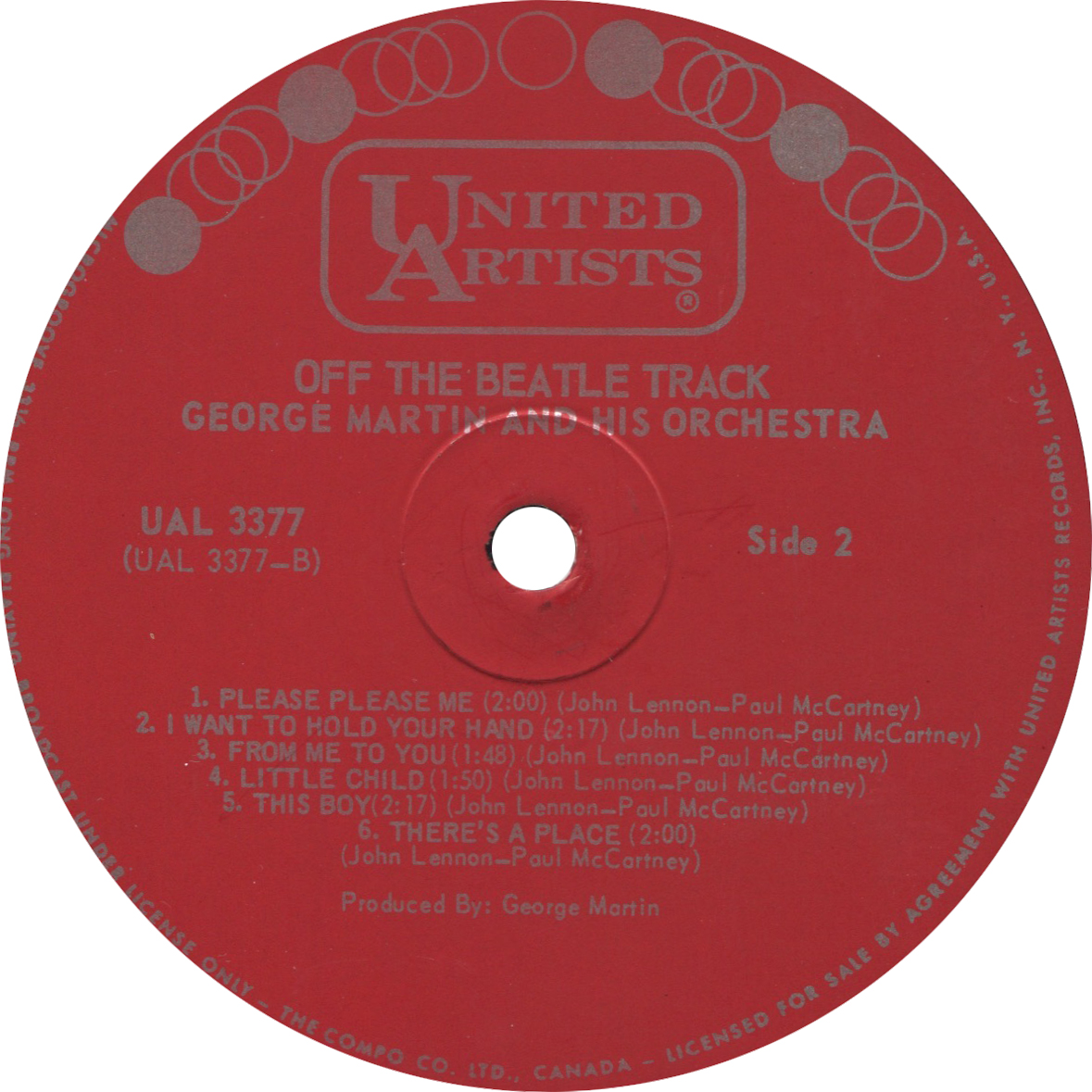
Fun Fact
Early pressings in the USA had "I'll Cry Instead" written as "I Cry Instead". Album notes and technical information being sent from the USA, Canadian pressings also carry the same mistake. But unlike the USA, the mistake was not corrected here until 1978 when production switched to Capitol, so all United Artists label copies carry the "I Cry Instead" mistake.
Pressing Information
Master tapes were sent from UA in the USA to Compo in Canada, where the pressing masters were prepared. Production of major orders (like The Beatles) was moved from Lachine to the new Cornwall plant that opened in 1963 around the time the album was issued. It is not known with certainty where A Hard Day's Night was originally pressed; if the plant opened in 1963, it would make sense that all copies of the album were pressed at the new plant in Cornwall, but it is also possible that early copies were pressed at the Montreal (Lachine) Compo pressing plant during a transition period, and that later copies came out of Cornwall. It has also been suggested that although operations had moved to Cornwall, both plants could have still been used to meet high demand and tight deadlines in the summer of 1964, and possibly early 1965.
It is important to keep in mind that although the cover artwork identifies the Lachine plant up until the 1970s, most copies (if not all) were actually pressed in Cornwall. LP.3366.UA1.2 pressings also have this matrix number hand etched in the trail off area:
Side 1: UAL-3366A-1F 1
Side 2: UAL-3366B-1H 1

Later copies can also be found with a different matrix number:
Side 1: UAL-3366-A
Side 2: UAL-3366-B
Pier Hemmingsen underlines the fact that "only two lacquer masters were in fact used for the vast quantity of MONO discs produced. It is probable that many copies of the album were made from well-worn masters and will offer less than superior sound quality" Source: Piers Hemmingsen Discography pt. 2.
Cover
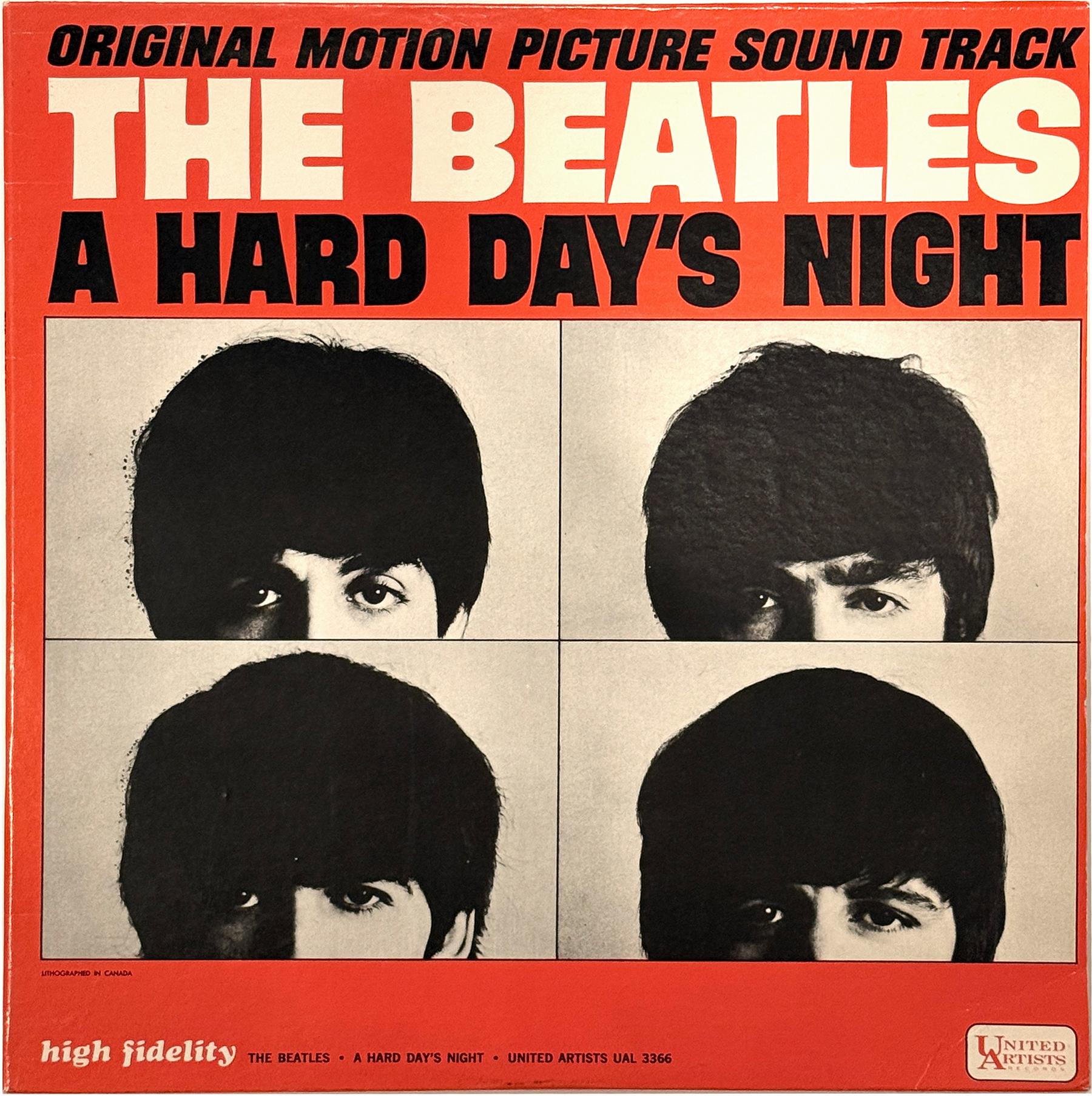
Mono reissue pressings (LP.3366.UA1.2) use a different cover construction type than LP.3366.UA1.1. This variation used a stereo slick that was trimmed for mono copies and "tucked" under the white back slick, indicating they were produced AFTER stereo copies were introduced in early 1965.
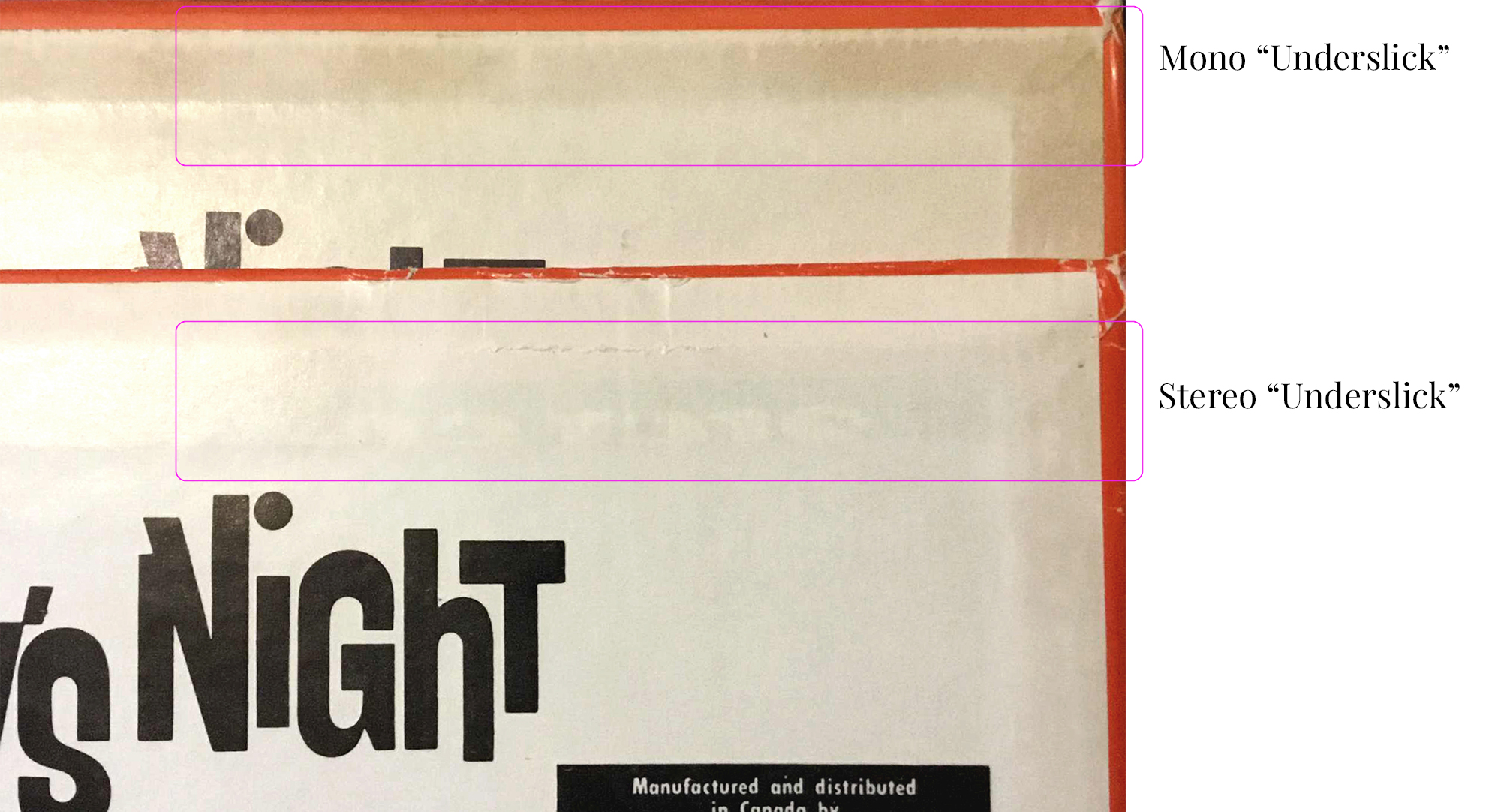
A trained eye can see the edge of the stereo slick under the white back slick -- copies with a stereo "underslick" (LP.3366.UA1.2) are therefore from 1965-1968, while copies with a true mono slick under the white back slick (LP.3366.UA1.1) are genuine 1964 copies, having been produced before stereo copies were introduced.

There were five different jacket construction types (differentiated by the shape of the cardboard inner seam - where the parts of the cardboard frame are joined inside the jacket). Four models seem to have been used with mono pressings between 1964 and 1968: Version 1 is found mostly on the earliest pressings, while variations 2 through 4 can be found almost interchangeably throughout the late 1960s. In this sense, this variation (LP.3366.UA1.2) can be found in either of the Version 1,2,or 3 configurations. Variation 5, on the other hand, is mostly found with later 1969-1973 copies, and therefore not found with mono red label copies. (see later entries).
Version 1 – Straight-cut with rounded outer edges

Version 2 – Angled and curved inner seams

Version 3 – Narrow straight-cut inner seams

Version 4 – Seamless construction

Version 5 – Wide straight-cut inner seams

Otherwise, the artwork for this Canadian pressing includes a manufacturing notice indicating they suposedly were pressed at the Lachine Compo plant near Montreal. The black squared marker is found on all copies up until the 1970s, but it is highly unlikely that all copies of the album were pressed there (if any!). Most of the production would have been moved to the Cornwall plant, making the Lachine notice erroneous, or at most, true for a very short period of time.
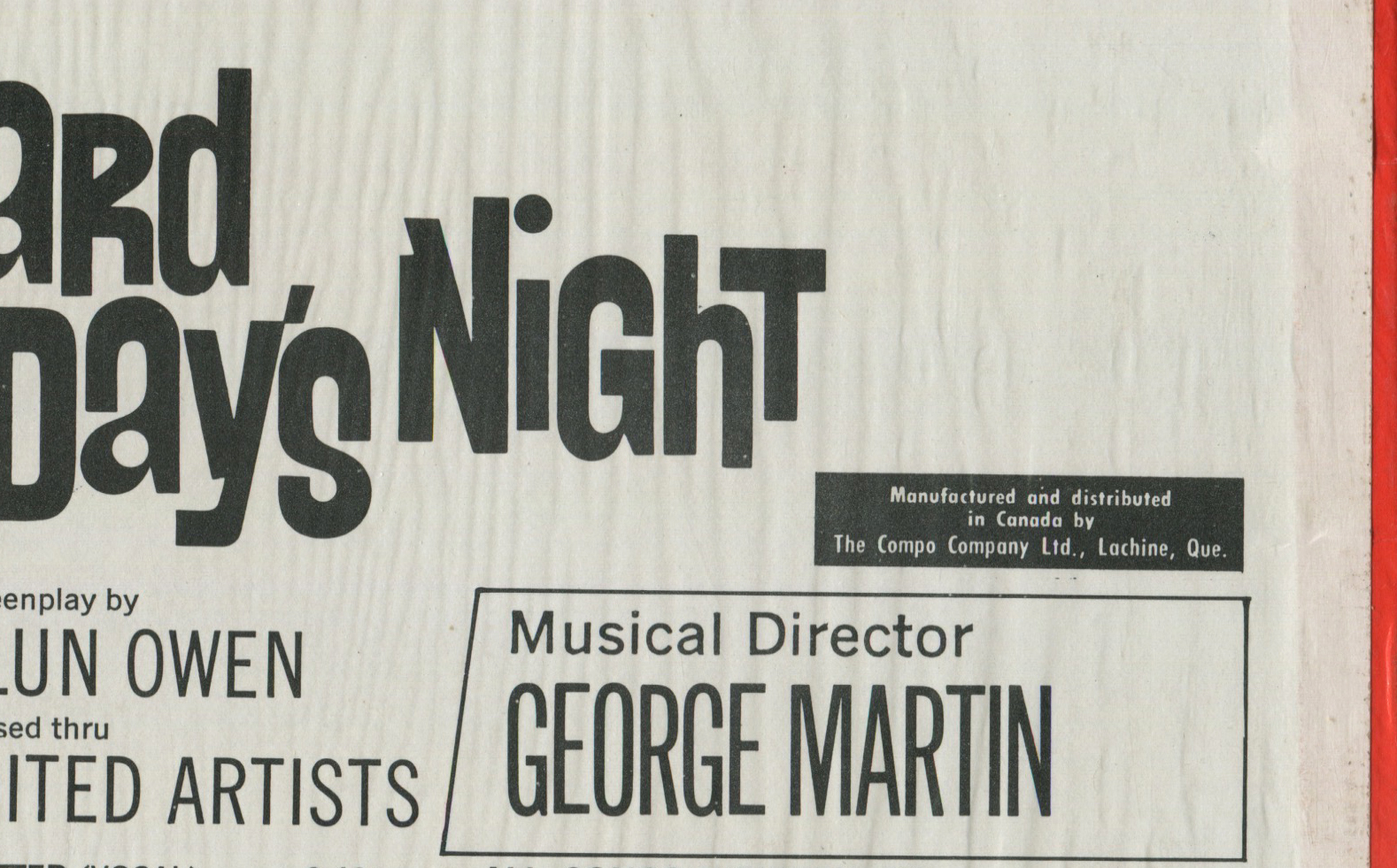
Packaging
Copies of A Hard Day's Night were sealed in a thick loose poly bag wrapper.
The discs were not placed in a usual paper sleeve, but rather, they were housed in a very distinctive semicircle plastic inner sleeve:
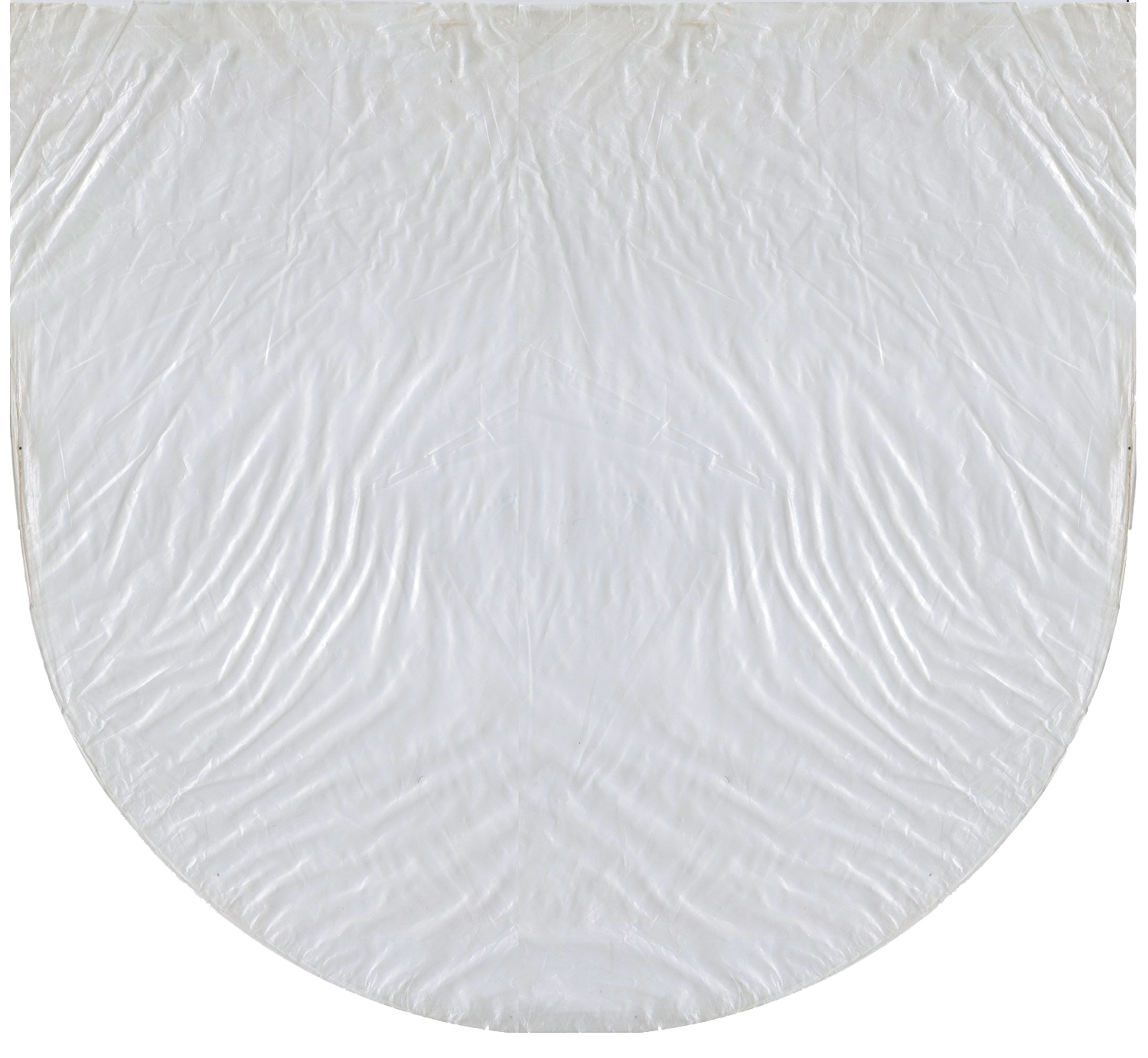
Sales
Sales estimates projected that 200 000-250 000 mono copies were sold in Canada. Unfortunately, no official sales figures have been documented (like with Capitol sales numbers).